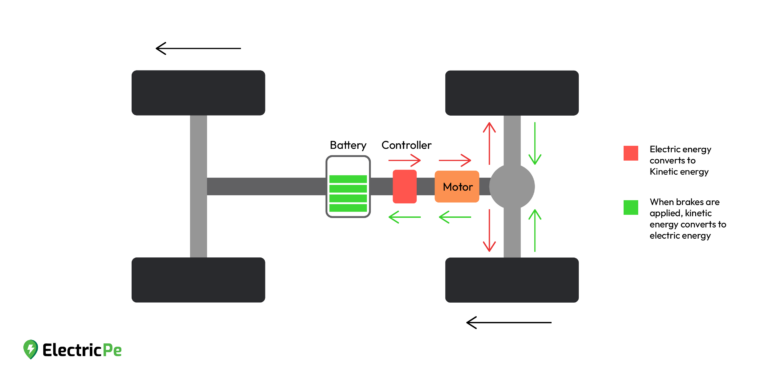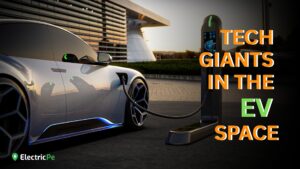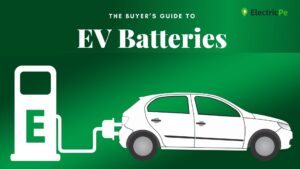The future is electric, and one of the standout features propelling this change is regenerative braking. Not only does it enhance the efficiency of EVs, but it also contributes to longer vehicle range and reduced maintenance costs.
All present day electric vehicles (if not most) come with this feature. If you’re wondering what it is or how it works, this blog is for you.
What is Regen Braking?
Regenerative braking is an energy recovery mechanism that decelerates an object by transforming its kinetic energy into a usable or storable form.
On all conventional vehicles, applying brakes causes the brake pads to slow down or halt the vehicle through friction. The energy generated by motion (kinetic energy) is lost as heat after braking, and couldn’t be used again.
Regenerative braking combats this loss of energy by utilising most of the kinetic energy produced by converting it into electrical energy and sending it back to the battery.
While this system might seem relatively new, the invention of the regen braking dates back to the 19th century.
History of Regenerative Braking
Renowned electrical engineer and founder of the Sprague Electric Railway & Motor Company, Frank J. Sprague introduced regenerative braking in 1886.
Fun Fact: Sprague also developed the first electric motor to maintain constant speed under varying loads in the same year.
Regen braking feature was first implemented in electric trains and elevators before making way to electric cars.
In 1967, The American Motorcar Company (AMC), better known as American Motors, developed the first regenerative braking system (RBS) in cars for their conceptualised electric car. However, Japanese car manufacturer, Toyota was the earliest to commercialise RBS in 1997 by launching the first mass-produced hybrid car – the Toyota Prius.
Regenerative Braking in Electric Vehicles
One of the most common features in all electric and hybrid vehicles now is the RBS. Almost all EVs come with it including models from popular electric scooter brands like Ola and Ather.
The drivetrain of an electric vehicle is powered by the battery that sends power to the motor, which in turn rotates the wheels. The electrical energy from the battery is converted to mechanical energy to propel the vehicle forward.
Without the RBS, the energy produced by the spinning wheels is completely lost upon braking. However, when the RBS is active, the motor works as a generator that converts the kinetic energy into electrical energy. The direction of electric current is reversed in this process by sending it to the battery instead of the wheels.

Consequently, regenerative braking improves the overall efficiency of electric vehicles by reducing the need for frequent recharging.
Why Regenerative Braking is Preferred
RBS has several advantages due to its ability to utilise otherwise wasted energy.
Some of them include:
Longer Life for Disc & Pads: Taking the foot of the accelerator pedal in cars, or twisting the throttle the opposite way in electric scooters or bikes usually activates regen braking. By slowing down the vehicle using RBS, the use of the rotors and pads becomes much lesser, thereby prolonging the life of the components and resulting in cheaper maintenance.
Better Range: Using regen braking effectively increases the stored charge of the electric vehicle. This increases the estimated range of the vehicle, allowing longer travels before stopping to charge.
Reduced Heat Emission: Conventional cars release heat into the environment every time the brakes are applied. Most Regen Braking Systems conserve about 80% of the energy produced by the spinning wheels, thereby considerably reducing the amount of heat emitted.
Stay up-to-date with all EV news and facts by following us on Instagram!





